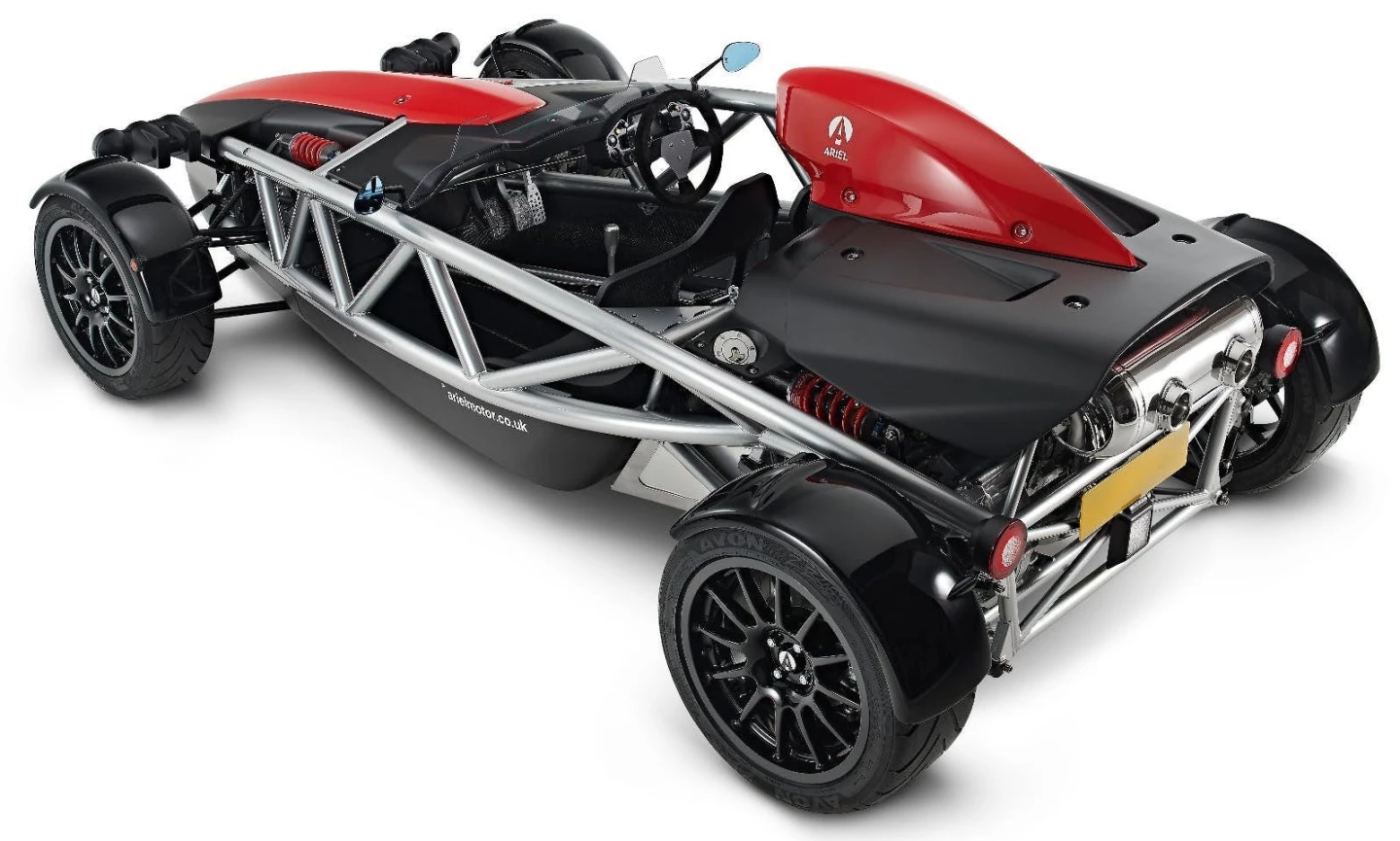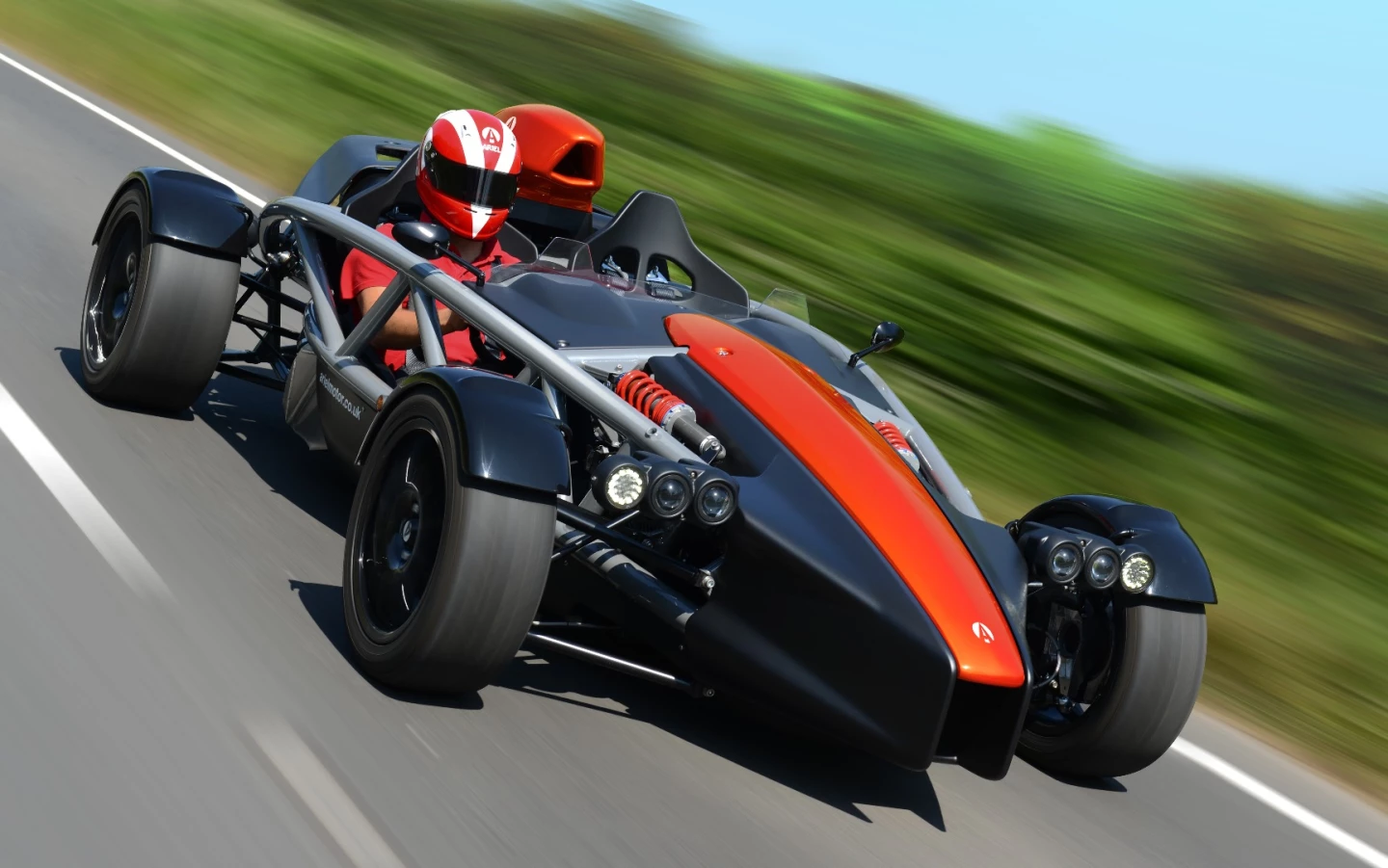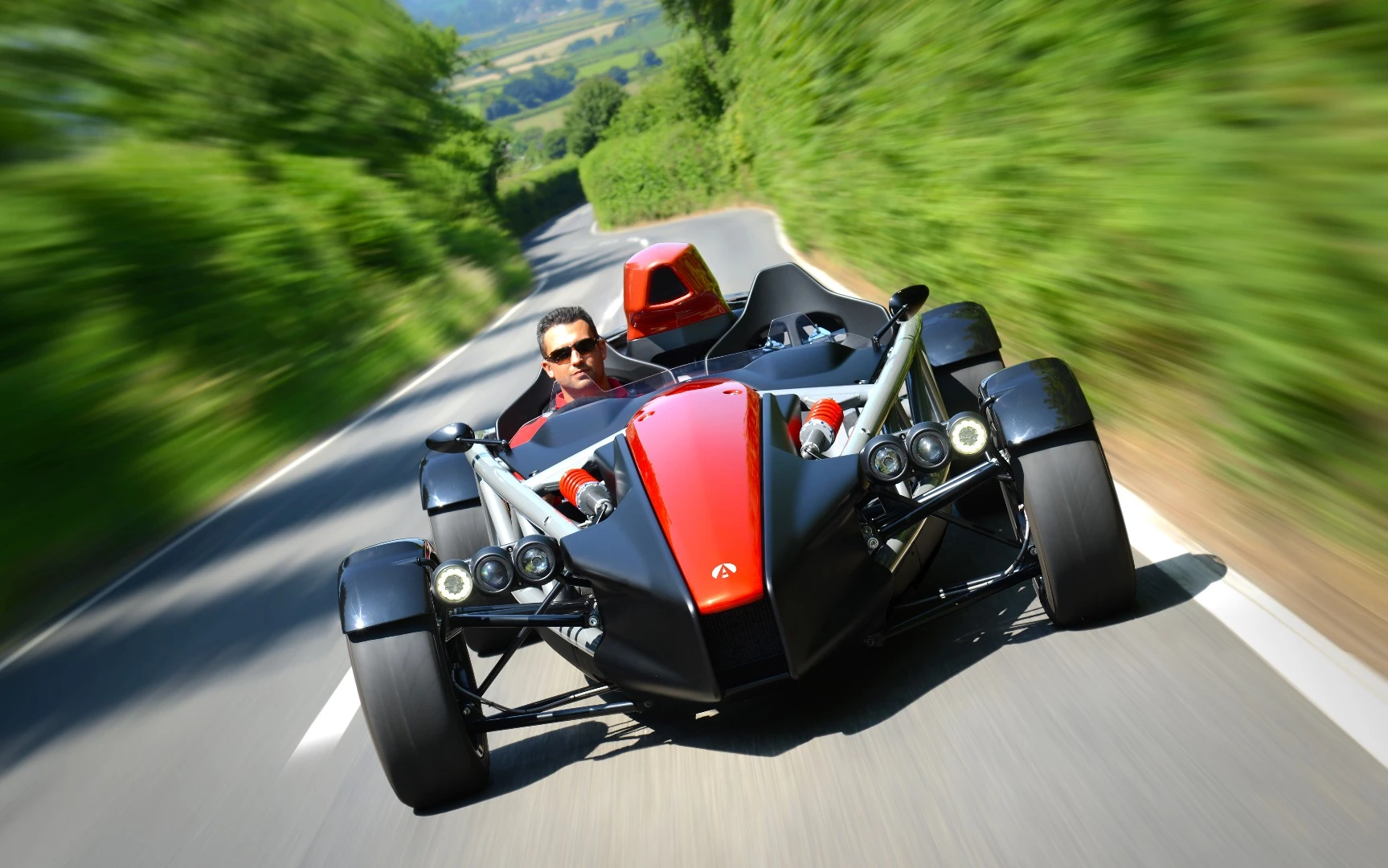Pound for pound, price for performance, there has never been a more focused production sports car than the Ariel Atom – and the new Atom 4 takes things up a notch. With a 320-hp engine, and significant revisions throughout the car, you can now get 2.8-seconds-to-60 mph (96.5 km/h) performance for around US$53,000.
There are many things to love about the Ariel Atom: its insanely fast lap times, its cheek-flapping acceleration, its wild, open-top, overgrown go-kart design, its funky curved trellis frame, its sub-£40,000 price tag.
But to us, the best thing about it is the way it shows so many hypercars up for what they really are: vastly overpriced garage jewelery for rich people. Appreciating assets that are rarely appreciated, because if you drive them hard or far they stop generating cash and start costing you a ton of money.
As we pointed out a couple of years ago, the Ariel is a true people's champion that routinely trots out on the racetrack and stuffs steaming helpings of humble pie into the gobs of cars costing 10, 20 or 30 times as much. If you want a status symbol, go get yourself a Koenigsegg or a Pagani. If you want the quickest and best-handling genuine driver's scalpel, pick up an Atom. Then spend the million-odd pounds you just saved on track days and driving coaches and promptly run out of excuses for your lap times.

Now, as we wait for its brutal electric Ariel Hipercar to drop, the British company has announced the next-generation Atom 4, which takes this wild naked warrior to new heights.
It starts with the engine – the latest Honda Type R donk. This 2.0-liter, 4-cylinder turbo gains a thoroughly unnecessary 10 horses over the previous model to a peak of 320 hp (239 kW). But the real story here is torque, which at 420 Nm (310 lb-ft) is a flatly terrifying 75 percent leap up from the naturally aspirated Atom 3.5's 229 Nm (169 lb-ft) and will enable an even wider range of opportunities to test the adhesion of any road-legal tire you could put on it.
It's housed in a new bronze-welded chassis, which keeps the familiar exosleketal shape of previous Atom bodies but offers some 15 percent extra torsional stiffness as well as improved interior space, leg room and crash protection.

Even the first-generation Atom was praised for its astonishing ability to stay flat under extreme track braking and cornering forces, but the Atom 4 gets a completely overhauled suspension system designed to manage acceleration squat, brake dive and cornering roll even better. Bilstein provides the dampers, but there's also an optional semi-active Ohlins pack in the works.
A redesigned steering rack adds extra turning lock and improves road usability and ease of parking, but you can also choose to specify an extra quick steering rack if you plan to do most of your miles on the racetrack.
The wheels move up a notch in size, with 16- and 17-inch front and rear rims, respectively, taking 195/50R16 and 255/40ZR17 Avon ZZR tires as OEM. The truly enthusiastic can up-spec the Atom 4 with full carbon rims, saving some 16 kg (35 lb) of unsprung weight across the car.
To handle the extra power, the brakes get an upgrade as well, to 278 mm 2-piston vented fronts and 253 mm rears, and there's also an upgrade kit available that takes you up to 290 mm AP Racing discs all round, with alloy 4-piston calipers. You can also choose to option up with a dial in the cockpit that lets you adjust brake bias between the front and rear wheels for fine tuning.

It might be an open-top face melter, but the Atom's bodywork has been completely overhauled in search of superior aerodynamics. The results include a decrease in drag, extra downforce to help with high-speed cornering, and much better air delivery to the radiator, intercooler and engine air intakes.
The rollover protection hoop is now invisible under a cowl that covers the main air intake next to the driver's head, and a tiny "aero screen" abruptly forces air up over the driver's head, helping to minimize helmet lift and channel air toward that center intake.
Most of the bodywork can be optioned up to carbon fiber if the standard weight of 595 kg (1,312 lb) is too lardy for you. If it's you that's lardy and not the car, the cabin has been widened by 20 mm and lengthened by 50 mm to "accommodate the very widest range of users."

The lighting has been revised, with LED indicators, stop lights and taillights, daytime running lamps and halogen headlights with auto lighting capability. The tiny luggage cubby is a little less tiny, and the switchgear and instruments are new, with a full color AIM TFT screen, programmable shift lights and a track datalogger. Launch control and traction control are now options.
Pricing will start at £39,975 (US$52,800), which is a couple of thousand pounds up on the Atom 3.5 but well worth it if you believe you can use the extra power and handling. As well as being road legal in the UK, the Atom now meets European Small Series Type Approval (ESSTA) and Australian Design Rules (ADR), so it's now much easier to sell throughout Europe and Australia. Deliveries will start in the British spring of 2019.
In terms of sheer, raw driving experience, there's very little outside the kit car and track special world that comes close to what this thing offers. It's great to see Ariel continuing to punch way above its weight. Keep swinging, guys!
Source: Ariel






















